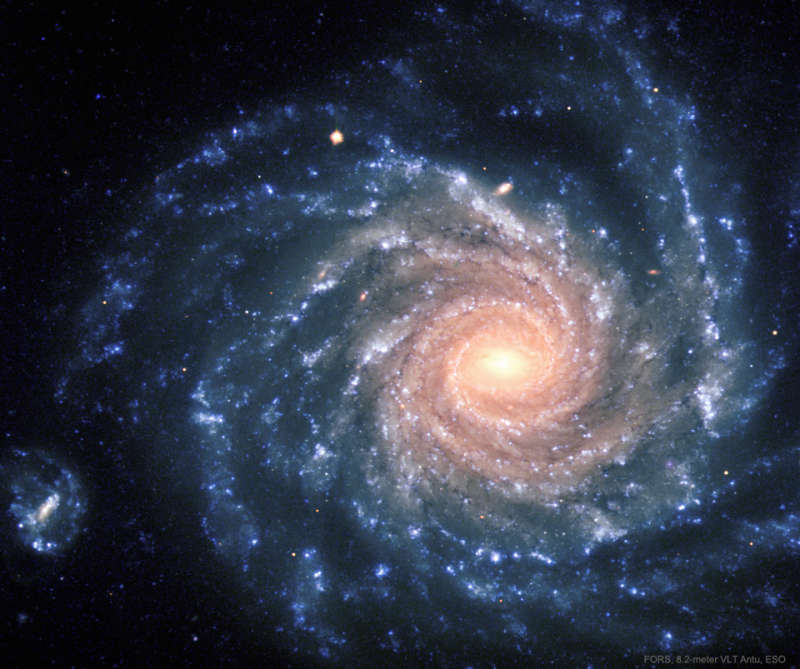
|
Explanation: Galaxies are fascinating not only for what is visible, but for what is invisible. Grand spiral galaxy NGC 1232, captured in detail by one of the Very Large Telescopes, is a good example. The visible is dominated by millions of bright stars and dark dust, caught up in a gravitational swirl of spiral arms revolving about the center. Open clusters containing bright blue stars can be seen sprinkled along these spiral arms, while dark lanes of dense interstellar dust can be seen sprinkled between them. Less visible, but detectable, are billions of dim normal stars and vast tracts of interstellar gas, together wielding such high mass that they dominate the dynamics of the inner galaxy. Leading theories indicate that even greater amounts of matter are invisible, in a form we don't yet know. This pervasive dark matter is postulated, in part, to explain the motions of the visible matter in the outer regions of galaxies.
Free APOD Lecture:
January 9, 2024 to the Amateur Astronomers of Association of New York
|
January February March April May June July August September October November December |
| ||||||||||||||||||||||||||||||||||||||||||||||||
NASA Web Site Statements, Warnings, and Disclaimers
NASA Official: Jay Norris. Specific rights apply.
A service of: LHEA at NASA / GSFC
& Michigan Tech. U.
Based on Astronomy Picture
Of the Day
Publications with keywords: NGC 1232 - spiral galaxy - dark matter
Publications with words: NGC 1232 - spiral galaxy - dark matter
See also:
- Portrait of NGC 1055
- APOD: 2025 September 4 Á NGC 4565: Galaxy on Edge
- APOD: 2025 August 22 Á A Tale of Two Nebulae
- APOD: 2025 August 19 Á Giant Galaxies in Pavo
- APOD: 2025 August 18 Á NGC 1309: A Useful Spiral Galaxy
- APOD: 2025 July 4 Á NGC 6946 and NGC 6939
- APOD: 2025 June 30 Á NGC 4651: The Umbrella Galaxy
